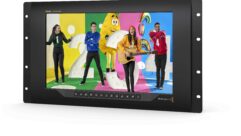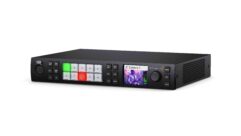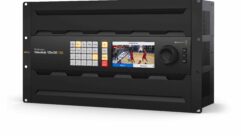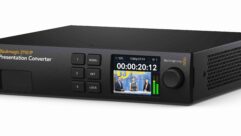
Design to Connect
May 25, 2010 12:00 PM,
By Don Kreski
How to reach your audience through your website.

One of the most important ways you can connect with potential customers is through your website, and one of the fastest ways to turn them off is with poor design. What makes the difference? Gary Ricke, owner of Orbis Web Design, a higher-end developer of business-to-business websites, was recently involved in a market research project undertaken by one of his clients; the company conducted a number of in-depth interviews asking its customers what they do and do not like about various websites.
The research study—and Ricke’s own insights—may help us all to achieve this kind of success in our AV-industry web projects. I asked Ricke what he found most useful from this study. Here are some of his thoughts.
1. People don’t want websites, they want information. “The study had a lot to say about functionality and intuitive navigation,” Ricke says. “The people interviewed said again and again that they wanted to find the products or services they needed, get a clear explanation of each, then move on.
“Another way to put this might be, ‘When you’ve got great content, you need very little design.’” You need clear, concise writing, you need great photography, and you need great navigation. This particular study suggests that the best designs are clean and uncluttered. And if you have a large site, a site search is very helpful.
2. Maintain your focus. The company that commissioned this study is a product manufacturer, so its customers asked it to focus on its products, making sure that product information was complete and thorough and that it included links to sales literature and the phone numbers they needed to reach people who could answer questions or take an order. If you’re an AV integrator or a sound contractor, you may want to focus on the projects you’ve done, the special services you offer, and of course whatever makes you different from and better than your competitors.
“It’s interesting that the average person, no matter what his demographic, seems to like clean and uncluttered pages,” Ricke says. “A really clean website says, ‘Here’s somebody with confidence in what they’re saying. And somebody who understands that, once they’ve captured your interest, they can present the information deliberately as you click through an intuitive flow of pages.’”
3. Navigation should be straightforward and predictable. “There are a couple of messages we can take from comments people made about navigation,” Ricke says. “First, you want to set up your site so that it takes a minimal number of clicks to get to what’s really important. If you can create pages where someone doesn’t even have to click, that’s better still—that is, they just roll their mouse over, say, a product picture, and an explanation appears.
“The other message is, ‘Deviate from commonly used design principles at your peril.’ For instance, people in this study said that they liked menu categories arranged across the top of the page with related choices on vertical dropdowns. They don’t want to spend the time to figure out some other navigation method we’ve invented, no matter how clever.”
The need for clarity also brings up an argument for smaller websites, Ricke says. “I have a client who makes pipe—conduit, sprinkler pipe, and so on. They used to have one big website, and you had to go through all these layers of menus and submenus to find the kind of pipe you wanted. But in reality, if you want sprinkler pipe, that’s all you want. They’ve responded by breaking up their big site up into smaller individual sites, and they’re getting much better results.”
Design to Connect
May 25, 2010 12:00 PM,
By Don Kreski
How to reach your audience through your website.
4. Keep the site current. The people in the study wanted Ricke’s client to constantly feature new products, events, and industry news and highlights. “Another way to say this is that there’s nothing more deadly than a page that’s old and out of date,” Ricke says.
5. Stick to relevant graphics. The respondents said they like photos that convey relevant information, but not clip art or “glamour” shots that provide little or no information.
Another interesting finding: Some people complained specifically about irrelevant Flash animations and other scrolling graphics. They want any animated graphics to convey useful information, and they want to be able to stop scrolling graphics, click on them, and be taken to a related section of the website.
Related Links

Last month, we looked at the science of responding to requests for proposal (RFPs): the processes you must go through to ensure that your proposals realistically describe what you plan to do, set a profitable price on your work, and protect you from unexpected demands and issues…

There’s an art and a science to writing winning proposals. The science will help you make sure the document you submit will realistically describe what you plan to do…

You can use LinkedIn to grow your client base, but the way it works is subtle…
Website Design Suggestions
Gary Ricke has summarized a number of the points from the study and posted them to the Orbis Design website. Here are some that seem especially relevant to the AV industry.
Characteristics of a model website:
- The home page is uncluttered and product-focused
- New products are prominently featured
- Organization of categories is clear and consistent
- Clear, simple keywords identify categories
- Use of vertical dropdown menus
- Contact information for technical assistance and product ordering that includes a telephone number
- Minimal clicks to obtain desired information
- Quick transition from page to page (i.e. speed)
- Non-product information is easy to find but does not overshadow product info
- Interactive, relevant graphics
- Scrolling graphics can be stopped and provide access to relevant pages
- Product pages provide effective cross-referencing.
Participant suggestions for the site:
- Put more focus on new product information over press releases
- Offer more information on industry innovation, best practices, and new products
- Clever product names are not appreciated—names should be easy to remember and easy to spell, and they should contain information that identifies the product’s use and function
- Confine graphic images to the products and use fewer esoteric or emotionally suggestive images
- Provide contact info and literature links on all product pages
- Keep literature current
- Make sure menu font size is not too small
- Provide a stronger search-engine tool that takes the user to desired pages without wading through options, articles, or unrelated items
- Chat rooms and feedback areas do not appeal to users. (“I prefer to talk to someone personally to make sure I’m heard.”)
Some additional thoughts
Ricke also suggests that the emphasis on finding needed information supports the growing role of social media. “Your website will always be the core of your marketing program, but it’s not the only way people gather information,” he says. “You need to figure out what your audience is using to find companies like yours or products like yours, and then make sure that you’re there.”
Pay attention to what user review sites are saying about your company and manage them as much as possible. That is, if it’s possible for potential customers to find you on sites such as Yahoo Shopping, ResellerRatings, or Yelp, they will tend to rely on them. Ricke says that a friend of his recently wrote that, “The Web is morphing from a lecture hall into a coffee house,” and for that reason, he thinks these review sites will continue to grow in importance.
Don Kreski is the president of Kreski Marketing Consultants, which offers marketing services to the AV industry. You can reach him at www.kreski.com/contact.html.










